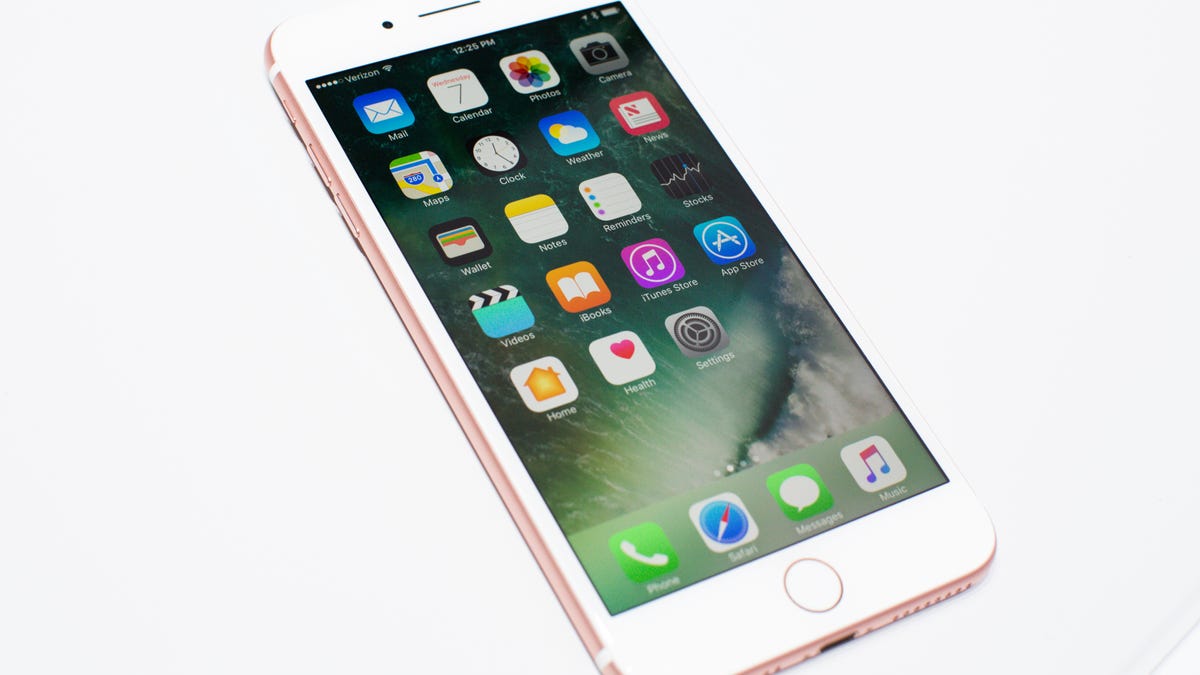Beware: The 32GB iPhone 7 soon won't feel so roomy
As it launched the iPhone 7, Apple wisely ditched a 16GB option. But with 4K video, big apps and raw photos, even twice that amount of storage will feel cramped.

The good news is that iPhones with foolishly small 16GB amounts of storage are mostly vanishing from the market. The bad news is that it won't be long before 32GB is the new 16GB.
When Apple began selling the first iPhone in 2007, it came with what now seems a laughably inadequate 4GB supply of flash memory. That's where you store apps, music, photos, videos, and the Apple iOS software that powers the device. But since then, video and photo resolution increased, app imagery quadrupled in size to look good on high-resolution Retina screens, phones became useful for watching TV and movies, and iOS itself got bigger.
So, even as Apple increased the minimum storage space to 16GB, usable space has become increasingly limited. A year ago, my colleague David Carnoy said Apple should ditch the 16GB option, but not only did the company shun that advice with the iPhone 6S, it also stuck with 16GB for the cheapest iPhone SE launched this March.
That's why the tech industry breathed a collective sigh of relief Wednesday to see Apple release the iPhone 7 and 7 Plus with 32GB, 128GB or 256GB of storage space and scrap the 16GB options for the last-gen 6S and 6S Plus.
The problem is that 32GB soon will feel just as bad. So if you plan on keeping your iPhone around for more than a couple years, considering shelling out the extra $100 for a higher-capacity model.
If you think you'll just use the iPhone's supplied apps and won't be exploring the 2 million apps on Apple's App Store, you should be OK. But if you're a student on a tight budget who still plans to use your phone actively, beware.
"Even consumers who use few apps but who use the iPhone 7 camera may appreciate the larger storage quantities in the new iPhone range," IHS analyst Ian Fogg said.
More from Apple's event
Apps are a big culprit. Here are some data points from an iPad running a beta of iOS 10. Lightweight apps are only 10 or 20 megabytes, but most of them are closer to 60MB or 100MB. Facebook is 151MB, Google Chrome is 175MB, Apple's Garageband is 1.5GB, and Asphalt 8: Airborne is 1.7GB. Amazon Video with a movie and TV show downloaded for offline watching takes 4GB.
Another big problem is photos, especially as our phones become portable albums we whip out to show off picture of vacations, kids and concerts. Each shot is a few megabytes, but adding the short video information of Apple's Live Photos feature increases file sizes.
On iOS 10, the newest version of the software powering iPhones and iPads, you'll be able to shoot photos in "raw" formats that offer higher image quality than traditional JPEGs but that also generally take up triple the storage space per photo. On top of that, Apple has gradually increased camera resolution so each photo captures more pixels.
The iPhone 7 Plus has dual 12-megapixel cameras on back. With iOS 10, some apps let you shoot with a "raw" photo format that offers more quality but takes up more storage space.
Next comes video. One 18-second clip I shot of a creeping tarantula takes 40MB, so 25 of those videos gobbles a gig. And that's just with 1080p video; newer iPhones can shoot 4K video with quadruple the number of pixels and thus much larger file sizes.
There are tricks to get by without enough storage, but some of the pain is easing automatically. iOS 10 comes with a tool to optimize file storage. With streaming video and audio services like Netflix and Spotify becoming steadily more practical, media files don't take up permanent residence on your device. And cloud computing services like iCloud, Dropbox, Google Photos and Google Drive let you store documents and photos on servers connected over the Internet so you can free up storage.
"With cloud storage, [32GB] should be OK for this generation," said Avi Greengart of Current Analysis.
If you're looking much farther, though, better go with at least 128GB.

